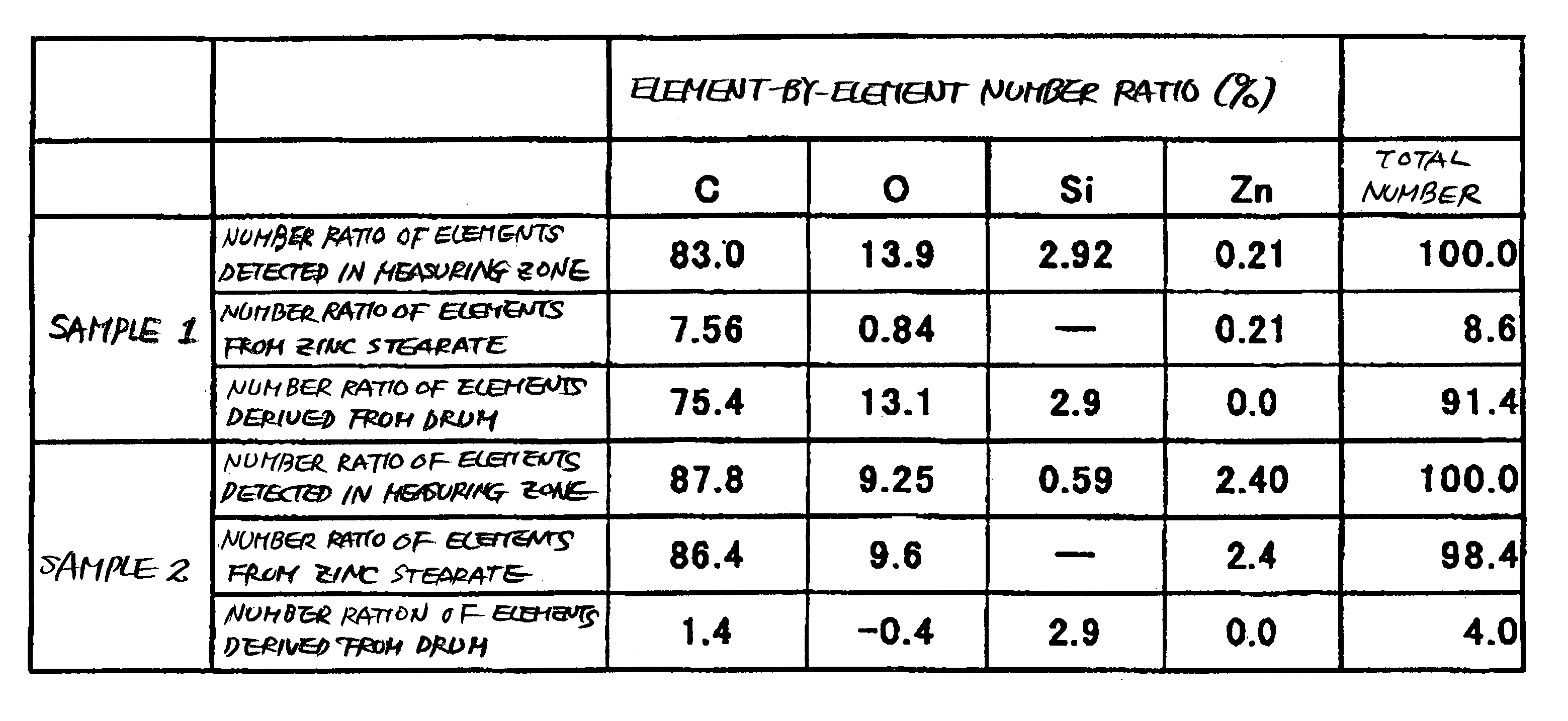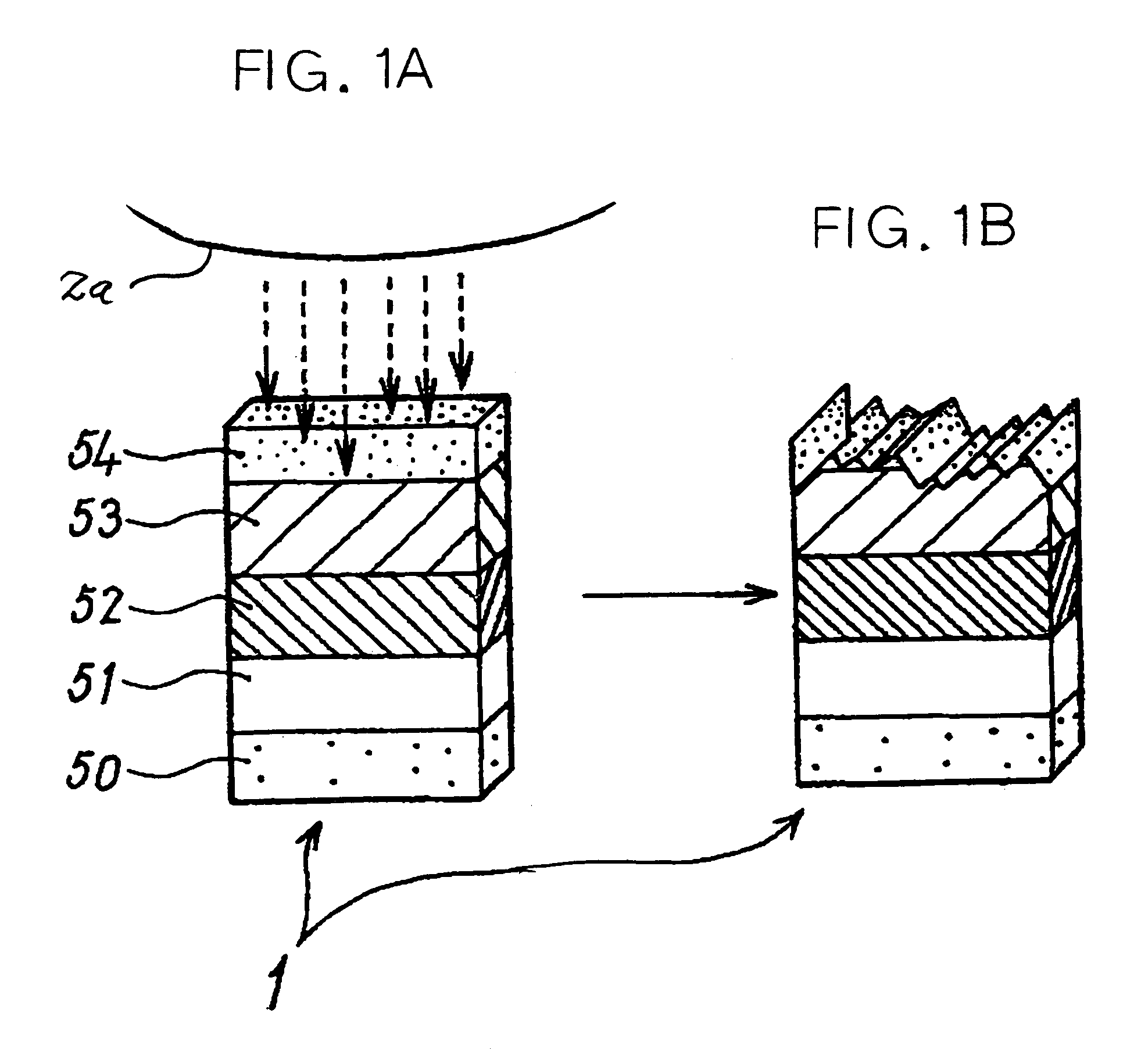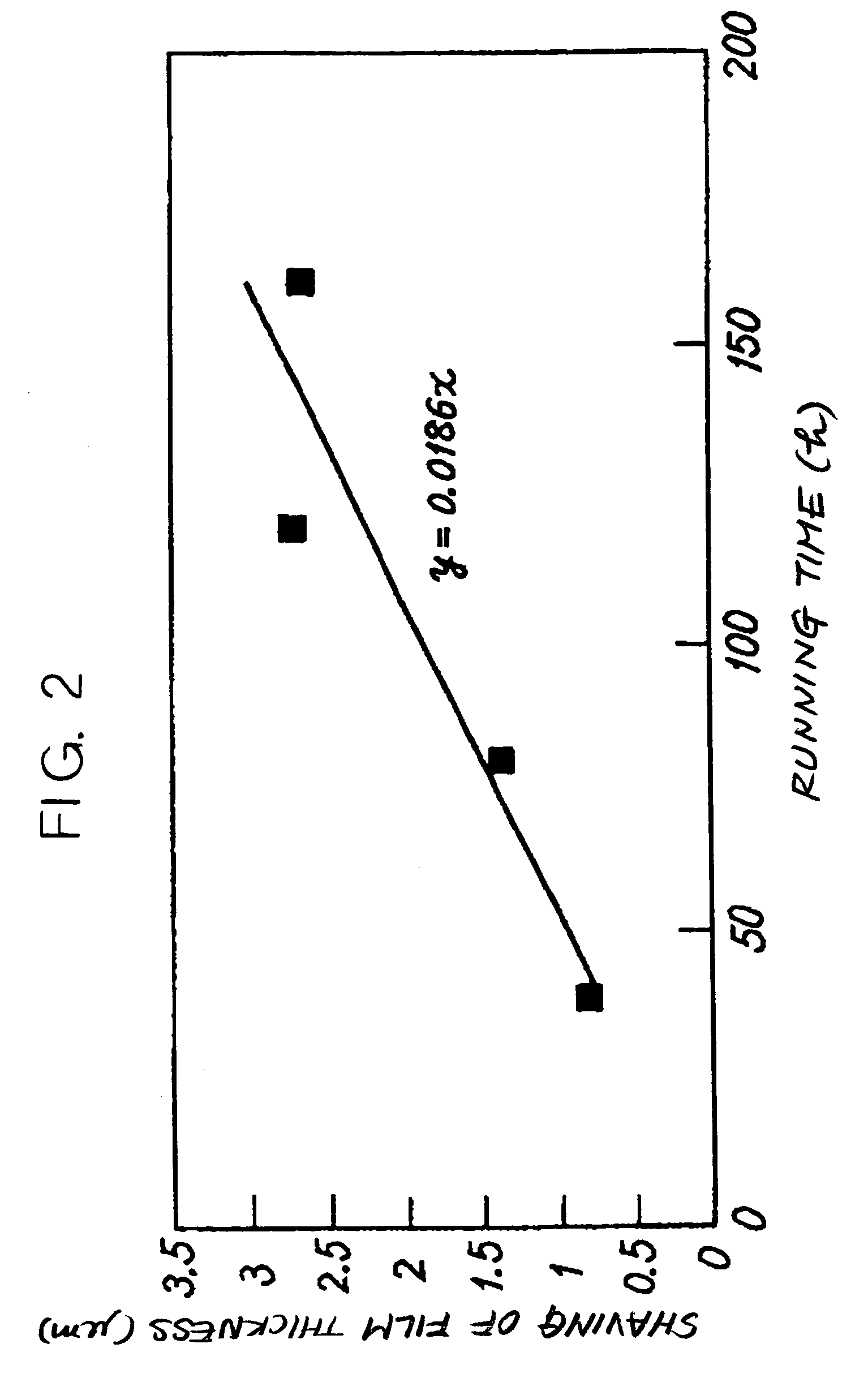Image forming apparatus using a contact or a proximity type of charging system including a protection substance on a moveable body to be charged
a technology of contact or proximity and image forming apparatus, which is applied in the direction of electrographic process apparatus, corona discharge, instruments, etc., can solve the problems of discharge chemically deteriorating the surface of the charged body, irregular discharge, and irregular discharg
- Summary
- Abstract
- Description
- Claims
- Application Information
AI Technical Summary
Benefits of technology
Problems solved by technology
Method used
Image
Examples
first embodiment
[0070]First, why the illustrative embodiment can achieve the object of the present invention stated earlier will be described on the basis of the results of various experiments.
Experiment 1
[0071]We conducted the following experiment in order to examine the deterioration of the surface of a photoconductive element or body to be charged that is conspicuous with a charging member contacting or adjoining the photoconductive element and applied with an AC bias. As shown in FIG. 1A, a charging member, implemented as a rotatable roller-like charging member (charge roller hereinafter), 2a was spaced from the surface of a photoconductive element 1 in order to exclude deterioration ascribable to mechanical wear and was applied with an AC-biased DC voltage. The charge roller 2a was caused to continuously charge the photoconductive element 1 for about 150 hours.
[0072]As shown in FIG. 1A, the photoconductive element 1 included a base layer 50 and an under layer or insulation layer 51 formed on t...
experiment 4
[0095]Hereinafter will be described an experiment showing that the amount of shaving is proportional to the peak-to-peak voltage Vpp of the AC voltage, i.e., the amplitude of the AC component applied to the charge roller 2a. For the experiment, the arrangement of the photoconductive element 1, charger 2 and coating device 30 shown in FIG. 3A was used. To obviate the deterioration of the surface ascribable to mechanical wear, all members other than the charge roller 2 and coating device 30 were removed. The surface of the photoconductive element 1 was continuously charged for 100 hours by discharge using an AC voltage whose Vpp was varied. The experiment was conducted under the following conditions:
[0096]Charging Conditions:[0097]Vpp=2.2, 2.6 and 3.0 kV[0098]f=−600 V[0099]moving speed v=113 mm / sec
[0100]Protection Substance: Zinc Stearate
[0101]Charging Time: 100 hours
[0102]FIG. 7 plots the amounts of shaving determined after continuous 100 hours of discharge with respect to Vpp. As sh...
experiment 5
[0104]An experiment showing that the shaving of the surface of the photoconductive element 1, conspicuous with AC discharge, is proportional to the frequency f of the AC voltage will be described hereinafter. Experiment 5 is identical with Experiment 4 as to the basic configuration and experimental conditions except for the charging conditions and moving speed. More specifically, while Experiment 4 varies Vpp while fixing the frequency f of the AC voltage, Experiment 5 varies the frequency f while fixing Vpp.
[0105]Experimental conditions are as follows.
[0106]Charging Conditions:[0107]Vpp=2.2 kV[0108]f=500, 900, 1,400, 2,000 and 4,000 Hz[0109]DC voltage=−600 V[0110]moving speed=104 mm / sec
[0111]Protection Substance: zinc stearate
[0112]Charging Time: 100 hours
[0113]FIG. 8 plots the amounts of shaving of the surface after 100 hours of charging effected by the above discharge with respect to the frequency f. As shown, the amount of saving is proportional to the frequency f.
[0114]The resu...
PUM
 Login to View More
Login to View More Abstract
Description
Claims
Application Information
 Login to View More
Login to View More - R&D
- Intellectual Property
- Life Sciences
- Materials
- Tech Scout
- Unparalleled Data Quality
- Higher Quality Content
- 60% Fewer Hallucinations
Browse by: Latest US Patents, China's latest patents, Technical Efficacy Thesaurus, Application Domain, Technology Topic, Popular Technical Reports.
© 2025 PatSnap. All rights reserved.Legal|Privacy policy|Modern Slavery Act Transparency Statement|Sitemap|About US| Contact US: help@patsnap.com



